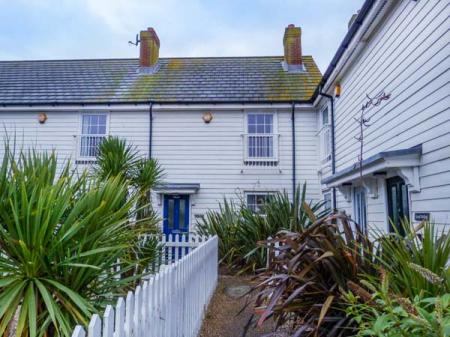
That first lighthouse was replaced with a brick structure just 20 years later. This, in turn, was replaced in 1790 with a much taller lighthouse (116 feet high) with oil-fired Argon lanterns. The lighthouse was taken over by Trinity House in 1836, and in 1862 Dungeness became the first electrically powered lighthouse in England.
Unfortunately, electrical engineering at that stage was too inefficient, and the electrical power was replaced by oil-fired lights once more. Expansion of the shingle due to silting meant that a second, low-level light was needed, and this was installed at the end of the 19th century.

A new, taller lighthouse was erected in 1904, to a design by Patrick & Co of London. This, the fourth lighthouse, became known as the Old Lighthouse when a new automatic light was erected in the 1950s. At the base of the Old Lighthouse is the Round House, which itself once had a light on its top.
The Old Lighthouse was decommissioned in 1960 and has been open to the public ever since as a museum and historic attraction. It is painted a distinctive black with white trim and is built of over 3 million bricks. It is 46 metres high and 11 metres in diameter.
From the top, you can see the New Lighthouse, easily distinguished by its striking black and white striped exterior. The New Lighthouse was built in 1961 as an aide to shipping further out on Dungeness Point. The New Lighthouse is still in operation.
On the ground floor are a ticket kiosk, shop and information point. You mount circular stairs up the inside of the lighthouse to the first floor, where there is a small exhibition on the history of the lighthouse and the Dungeness area. There are also a small number of items related to the lighthouse's history, such as old photographs, lighthouse keeper's uniforms and logbooks.

You climb a further set of stairs to a chamber that holds sector lights. These coloured light panels are arranged around a central lamp. The lamp shone through the various red, green, and clear panels to send a warning beacon to ships in the English Channel and guide them around the dangerous shingle banks of Dungeness. The coloured panels are still in place but the central lamp was removed when Trinity House sold the lighthouse.
From the sector light chamber, you climb two sets of stairs to the main fresnel light and viewing platform. The view from the platform is stunning, though to reach it you do have to contort yourself to get through a small hatchway. Children will love using the hatchway but people with limited mobility might have problems.
Aside from its historic interest, the Old Lighthouse offers superb views over the Dungeness shingle, and out across the Channel. An RSPB nature reserve is nearby, and there are numerous walking trails. Beside the lighthouse is the terminus of the Romney, Hythe, and Dymchurch Light Railway and you can often see RH&D trains preparing for a run.










 We've 'tagged' this attraction information to help you find related historic attractions and learn more about major time periods mentioned.
We've 'tagged' this attraction information to help you find related historic attractions and learn more about major time periods mentioned.


